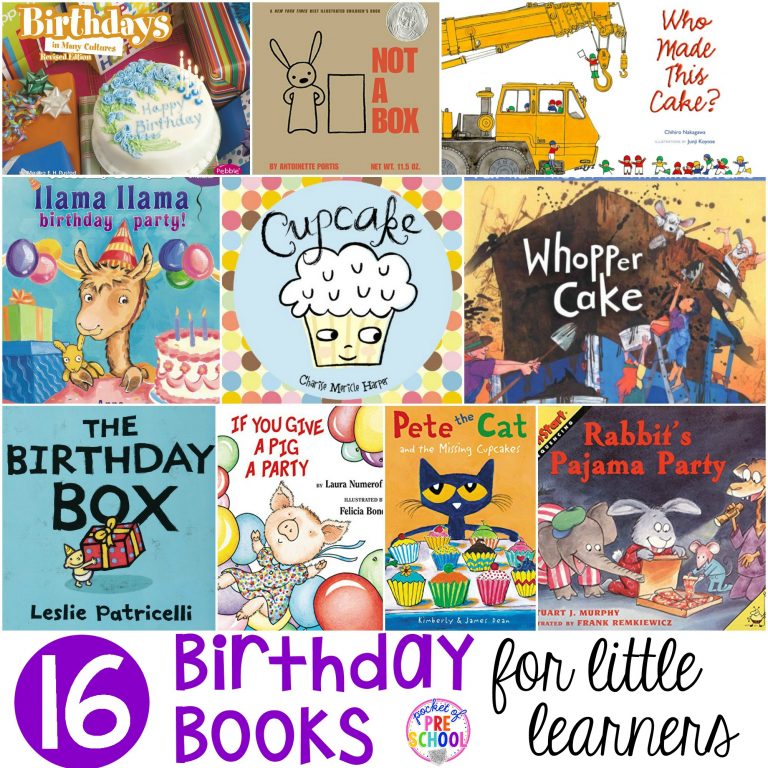Classroom Management Tips and Tricks for Early Childhood
Share This Post:

Let’s chat about the hardest thing in the classroom. Classroom management. Implementing a behavior management system that has a day-to-day structure and addresses challenging student behaviors is imperative for success. Creating a caring classroom environment with visual supports, classroom routines, intentionally teaching social skills, and effective planning are critical to effective classroom management. Then the learning can occur.
Here is a FREE handout with my top classroom management tips with tons of resources linked if you would like to learn more or grab a printable. Click Below to download the FREE Classroom Management Handout.
Grab the FREEBIE by entering your email in the box at the bottom of this post. This post contains affiliate links which means I earn a tiny commission when you use my links at no cost to you.
Classroom Management Tips and Tricks

A Behavior Management System for Little Learners
For some of your students, this may be the first time in a classroom. This can be exciting and overwhelming at the same time. We need to teach them what to do and what the age-appropriate expectations are in a classroom. Green and Red Choices is the perfect behavior management tool for early childhood.
Green and Red Choices are clear, consistent behavior expectations paired with visual supports stated in a positive way. Green choices are the choices we want students to make, like gentle hands, using materials safely, and using walking feet! Green represents go, keep making green choices. Red represents stop, stop making a red choice. Green and red choices focus on the choice rather than the child. If a child makes a red choice, they can fix it (change their behavior) and make it a green choice.
I have large green and red choice boards in my circle area. The small chart is easy to take anywhere with me in the classroom (ex: small group or on the playground). You can read all about implementing and using Green and Red Choices in your classroom HERE on my blog or watch Facebook Live HERE.
Classroom Environment
The goal is to set up a safe, welcoming environment with supports to help students develop independence and social skills. What is on the shelf and how many things are on the shelves are very important. The activities on the shelves need to interest the students, be culturally diverse, and encourage explorations. Be intentional with what you put on the shelves, and LESS is more! Spread out the bins so students can see what is inside.
The bins don’t have to be full to the top! Put less in each bin and keep the rest in storage. For example, put 10 cars in the bin instead of 20. Put half of the letter locks set in the bin, or put 5 dice in the basket. This will help with clean-up and make picking something to play with less overwhelming for the student.
Label the Classroom! Put a label on the shelf and on the bin so students can be more independent during both play and clean-up.

Use Visual Supports and Routine Charts as needed throughout the classroom to support students, so they are able to become more independent. Plus, students thrive on predictable routines (adults too). Teach each routine using visuals, social stories, and children’s books during the first weeks of school and reteach as needed throughout the year. You can grab my FREE First 10 Days of School Lesson Plans to see how I teach and introduce each routine. Don’t forget it is NEVER too late to teach or introduce a classroom routine. If some part of your day isn’t working, teach what you want students to do and use visual supports.
Here are some printable visual supports and routines for the classroom:
- Bathroom (printables)
- Handwashing (printables)
- Art Easel (freebie)
- Sensory Table (freebie)
- Emergency Routine (blog post)
- Playground/Recess Expectations (printables) – Place the poster on the playground or classroom door. Remind students of the expectations each day before they go on the playground.
- Check out all the visuals and routine charts in the Social Skills Curriculum HERE
A Visual Schedule for the entire day should be posted and utilized in your classroom. A consistent, predictable daily schedule helps students feel safe and secure because they know what is coming next and what is expected. Students learn the sequence of the day and can begin to predict and anticipate what will come next. Before or after each activity, I review the schedule and put the cards of things that are finished in a basket under the chart. Read more about creating and utilizing a visual schedule HERE and grab one from my TPT store HERE.

Circle Time Floor Visuals help students visually see where to sit. You can use sit spots, carpet squares, or make a grid with tape on the rug. Now students can visually see where their body needs to be, and it also teaches students about personal space. They can visually see where their personal space is and where their friends’ personal space is. I placed rainbow tape around the edge of the carpet to create a huge rectangle. I could tell students to stand on the rainbow tape for various activities if needed.

Make waiting lines! Make lines with tape or use feet images on the floor to show students where to line up or wait. It can be tricky for students to line up and wait. By placing a line on the ground, students can visually see where they need their feet to be, helping them to be able to wait and get in line independently. Place icons on the line for the line leader, door holder, and caboose for students to stand on who have that job.
I also place sensory bottles by the line so students can explore the bottles to help them wait independently to wash their hands at the sink. If you have any class graphs or anchor charts, put those where students wait because students will examine and talk about them as they wait. Waiting is hard for little learners.

Classroom walls! Look around your classroom and ask yourself, is it too much or too little? Is this visually overwhelming for students or a student this year? Here is a great article from NAEYC called Considering the Walls to help you reflect on the walls in your classroom.
Routines
Routines give students emotional support, safety, and help ease anxiety. Starting with the first day, you need to have classroom routines, so students know what to do and what the expectations are. Teach each routine using visuals during the first month of school. It is NOT wasted time! Reteach as needed throughout the year. Having a solid morning routine will start each day with students learning the minute they walk in the door. Check out my Facebook Live about the Morning Routine here.
I previously stated how important a visual schedule is, but creating a daily schedule that works for your students and school can be tricky. Make sure you are creating a schedule that is developmentally appropriate. Circle time and small group should be an appropriate amount of time depending on the age of your students. At the beginning of the year, my circle time would be only 10 minutes long because that’s all they could attend for. Slowly as the year went on it, both circle time and small group time got longer. It’s ok to have two circle times! I have always had two circle times plus music and movement time! The circle times are shorter, so students are able to attend and learn with fewer problem behaviors. Read more about how to create a daily schedule HERE and see my half-day and full-day schedules.
Clean-Up Time
Clean-up time can be hard for students. My biggest tip is to create a clean-up routine and use visual supports! My clean-up routine was: stop, clean up, and dance. The clean-up songs I always used were Kids Bop songs with a fast tempo. Since the song had a fast tempo, students would clean up fast to the tempo and sing as they cleaned up, making clean-up time a positive time in the classroom. Once a student cleaned up their activity, then they would go help a friend, clean up that activity, and repeat until the whole classroom was cleaned up. Teachers also helped, praised students, and modeled cleaning up. If you see a student struggling, offer choices like, “Do you want to clean up the rectangle blocks or the dinosaurs?” Once the classroom was cleaned up, everyone danced at the carpet for the rest of the song, which was a fun reward!
Observe center time and help BEFORE it becomes overwhelming! Blocks and pretend were the centers that were always a hot mess in my classroom. When I noticed there were things everywhere, I would talk to them and help them clean up the things on the floor they were no longer playing with. This way, the mess isn’t overwhelming for a student when they want to change centers. If the mess is overwhelming, students will likely have problem behaviors.
Giving a 5-minute warning before the clean-up music came on was also important. A student or I would walk around to each center, showing the 5 more minutes sign and verbally saying 5 more minutes. This helps students anticipate that center time is almost finished, and they need to come to a stopping point soon. It’s the perfect time to take photos of student work, such as block structures before students have to clean them up.
Grab Clean Up Visuals & Printables on TpT or watch the Facebook Live HERE.

Teach and Support Problem Solving
Solving problems is HARD, especially when you have big feelings. To support my little friends, I teach problem-solving strategies they can use when they encounter a problem. I introduce the problem-solving techniques at class meetings during the second month of school.
Each week I introduce four new problem-solving techniques and end up with nine to twelve techniques total based on what my students need that year. I explain the technique in concrete terms, show the visual, and give short statements students can use to help them understand what the technique is and what it can look/sound like. We also act out problem-solving techniques with puppets.
In the classroom, try to make EVERYTHING a problem to solve, then model, talk through your thinking out loud, and use visuals to support students as they try to solve their problems. For example, I may put out a big ball of playdough in the center of the table for table time, and students have to figure out a way to divide the playdough. It only takes a few extra minutes to sneak in problem-solving opportunities, but slowly students become more and more independent problem solvers.
You can read more about how to foster problem-solving HERE on my blog, watch the Facebook Live, or grab Problem Solving Techniques Unit HERE.
 Safe Place
Safe Place
Set up a safe place or a cozy corner for students to go where they feel safe, can calm down, or solve problems. It should be a place that is cozy with visual supports and that is away from the loud spaces in the classroom. It is a place students can go when they feel various emotions like sad, mad, frustration, nervous, or even tired. Sometimes students (teachers too) need to take a break from what’s going on around them so they can regain control of their emotions. Put a calm down bucket in the safe place so you can move it to the student who needs it. This prevents the need to have the upset student move across the classroom.
Just remember, the safe place is NOT time out. You want to make it a place students WANT to go when they need to calm down or solve a problem. Being upset or having a problem is not a punishment; it’s a life skill. We need to teach them, not punish them.
You can read more about how to create and implement a Safe Place in your classroom HERE on my blog, watch the Facebook Live, or grab the Calm Down Techniques printables on TPT.
Lessons/Activities
The lessons and activities you plan need to be intentional and at the appropriate level for your students. If the activity or lesson is too hard or too easy, you will not be able to keep their attention, leading to undesirable behaviors. Students should be challenged, not frustrated. Know your students through observation and assessment and use the data you’ve gathered to develop appropriate lessons, groupings, and differentiate as needed.
The length of the lesson also needs to be appropriate for the age you are teaching. Do it if you need to change your daily schedule from one long circle to having two circles instead! Check out this Blog Post on things to consider when creating your daily schedule.
As you plan your lesson or activity, ask yourself and reflect …
- Can I add movement? – For this pattern activity, students made giant snakes across the table!
- Can I add sensory?
- Can I make the activity more open-ended?
- Is the lesson fun, hands-on, and engaging?
- Is it developmentally appropriate?

Here are some helpful links to help you plan amazing lessons for small groups, table time, centers, and circle time!
- Read Aloud Ideas
- Small Group – FREE printable small group idea list

 Center Time Management – Clips!
Center Time Management – Clips!
Management during centers is so important for our little learners. No matter what system you use, it’s important for students to know the expectations for the classroom centers and center time. Our center time was an hour each day, which is a huge block of time for students to play and learn!
In my classroom, I have five centers: library, blocks, pretend, art, and discovery (math and science together). Each center has a symbol and a color. The art center is red, and the symbol is paint splatters. Each center can have three students at a time, which is why there are three clips on each center. Once the clips are gone, that center is full, and the student needs to pick another center to go to.
At the beginning of the year, I teach about and introduce each center using books. I spend time during center time to introduce each center and the materials in each center. This sets the stage for the rest of the year because now students know the name of each center, what materials are in each center, and the expectations for each center! There are fewer problem behaviors and fewer students wandering around. If center time is not going well in your classroom, take a week and reintroduce each center. Trust me; it’s a game-changer!
Read all about how I manage and introduce each center in this Center Time Management Blog Post or watch the Facebook Live.
That was a ton of information, so don’t forget the handy handout that summarizes all my tips! Click below to download the FREE Classroom Management Handout HERE.
My final thoughts: Remember to have a consistent, predictable daily schedule. Pack your classroom with visuals and teach students how to use the visuals so they can slowly become more independent. Teach and reteach various classroom routines using visual supports. Pick and be consistent with a behavior management system like Green and Red Choices. Plan fun, hands-on, engaging lessons and activities that include movement and sensory that are based on students’ interests, your observations, and assessments. Create a safe place in the classroom for students to be able to go when they have big feelings. Teach problem-solving strategies to help students become problem solvers! Now take time to reflect on your current classroom management strategies and think about what strategy you want to try or change!
Check out the video about classroom management here!
Love this post? Pin this image!

hey, i’m jackie!
I’m Jackie, your go-to girl for early childhood inspiration and research-based curriculum.













 Safe Place
Safe Place 










